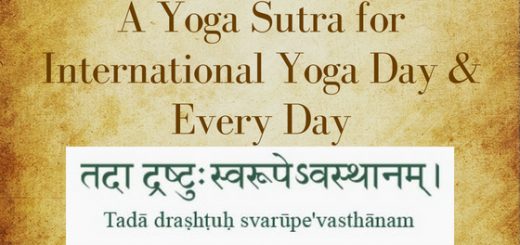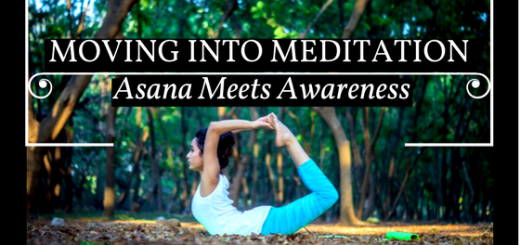Yoga Meets Kettlebell
There are two kinds of travellers one sees on flights. Those that haul their own baggage up into the cabin and those that cannot. With my relatively small frame I’m often presumed to be the latter, until I swing my 8 kg bag into the cabin and settle into my seat. With all the smugness of someone whose functional training just proved highly functional. Apart from my Asana practice, I might also have a chunk of cast-iron (with a suitcase handle no less) to thank for it.
Body-weight lifting (and balancing it on all of two palms) is one of my favorite parts of Asana practice, because of all the strength, focus and playfulness they spark off. Lifting one’s own body weight is a challenge one faces on the Yoga mat often, so what new dimension would an external weight – a 4 kg ball of iron – add to my practice? How would its off-set center of mass interact with my muscles, and most importantly, would this be fun ?
Once used to measure grains and goods, the kettlebell (or Girya in Russian) has been around for centuries before invading gyms everywhere. With its unique design, it was only a matter of time before entire workouts began to grow around it. A dumb-bell centers the mass with one’s hand but the kettlebell has no such intentions. Its center of mass is about 6 inches from the handle, and shifts depending on the exercises you do with it.
As someone who doesn’t see herself mindlessly and endlessly lifting weights while loud ‘music’ thumps on (#notahimbo), I headed in the direction of incorporating kettlebell moves into my time on the Yoga mat. Breath awareness, mindfulness, presence, focus and grounding – some of the regulars in Asana practice – made themselves particularly useful with the kettlebell, in static and dynamic poses.
Here’s some Yoga-meets-kettlebell moves I explored, and the little observations that peppered the way:
- Kettlebell Rowing in Warrior 3: If your core wasn’t already engaged enough in Warrior 3, our new cast-iron friend is about to fix that. With a side of powered up arms and a base foot that will have to ground itself all the more. Begin with the weight-lifting arm pointing straight down and then row that arm as high up as you can. Exhale on the exertion, elbow pointing to the ceiling. Your triceps, biceps and deltoids will personally thank you for this. Keeping the gaze fixed and the mind still is more than half the battle in maintaining balance.


2. Side Elbow Plank variation: Do not try this unless you are sure of having the strength to hold up the weight. Keep a firm grip that activates your arm muscles enough to keep holding the weight. That forms the expression of the pose, which wouldn’t be possible without solid grounding and a strong core. Once you have the latter two, feel free to explore your own detours from the pose.

3. Half Moon with kettlebell: Time to strike that elusive balance again. Helps if you keep the extended leg active with the foot flexed, and as always let the base foot ground with all its might into the floor. Let the hand press down on the block to make a firm foundation of it. Hold for about 5 breaths to begin with. Ideally, the base foot is parallel to the long edge of the mat, and that is something I’m still working on in my experiments with the kettlebell.

Breathing makes it better! Ujjayi breath or any long deep breaths with a steady rhythm add a lot of power to your exertion as they help you access your deep core muscles. I feel a lot more focused and in control when I’m breathing like I mean it. Keeping your spine long allows your lungs to expand fully and keeping the jaw relaxed allows the diaphragm to smoothly expand and contract. To begin with, try each of the above for 5 breaths and gradually step it up.
Precautions: A full-body warm-up is a must before any workout, primarily to ready your muscles and prevent injuries. And a cool-down post-workout to prevent muscle soreness. Make sure the neck stays comfortable at all times and keep a neutral spine to prevent low back pain. Alternate kettlebell workouts with lighter, non-weight-bearing workouts, so that your muscles have enough recovery time.
For beginners: If you are new to the kettlebell and Yoga, then develop a basic familiarity with either for at least a few months before you combine the two. Here’s a good place to begin: Kettlebell Commandments. Look for a qualified teacher to teach you the basics before you explore and experiment.
In my pursuit of strength and grace under pressure, I’m glad to have found a rewarding (and often unnerving) challenge in my kettlebell. For more Yoga-meets-kettlebell moves, follow me on Instagram @radicallyeverafter and let me know your thoughts in the comments !





You always do the right thing. God Bless you.
Thank you
Good post! I read your blog often and you always post excellent content. I posted this article on Facebook and my followers like it. Thanks for writing this!
whoa1h this blog is great i love reading your posts. Keep up the great work! You know, a lot of people are looking around for this information, you can aid them greatly.